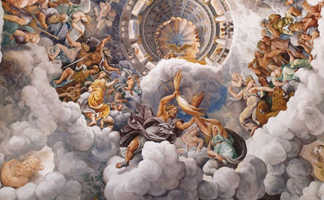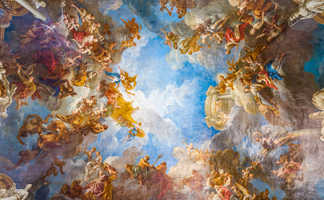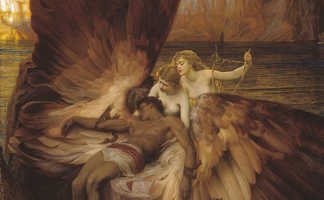If, while in Greece, you come into possession of the Greek version of the 2-euro coin (each country in the Euro Zone has its own country-specific coin), have a close look at the obverse (heads) side. It’ll show a woman sitting side-saddle on a prancing bull.
This is a fairly common image from Greek mythology and is perhaps most famously memorialized in the art world by the Venetian artist Titian’s painting dating from 1560 and entitled The Rape of Europa.
“Rape” in that day actually meant something more akin to “abduction” or “seduction.”
Europa, from whom an entire continent gets its name, wasn’t even European. She was a Phoenician Princess and was first mentioned in written form some time around the 8th century BC. Not long after that the first surviving vase painting of her appeared during the 7th century.
Europa was from the city of Tyre, which is in modern Lebanon. She was considered the daughter of Agenor, king of Tyre. The Iliad, however, says that Europa was the daughter of Phoenix, King Agenor’s brother.
Zeus, who seemed to be smitten by some female or another on a daily basis, fell in love with Europa and tricked her by transforming himself into a gentle white bull which insinuated itself into the cattle herds of Europa’s father. One day Europa was out with some girlfriends gathering flowers and the white bull followed. Europa petted the bull from time to time and finally climbed onto his back. That’s when the bull ran off with her, plunging into the Aegean Sea and swimming all the way to Crete, the place where Zeus himself had been born and raised.
It was there that Zeus dropped the disguise and revealed himself to be the great god. Their relationship was consummated, and Europa became the first queen of Crete. They had a number of children, the most prominent of which was Minos, who became king of Crete and founded the pre-Hellenic Minoan civilization.
Zeus gave Europa some pretty impressive gifts. One was Talos, the first robot, a bronze being who kept watch over Europa and the island of Crete. In another story, Talos defends Crete against Jason and the Argonauts by hurling boulders at their ship.
Europa’s father- let’s say he was King Agenor of Tyre- sent his three sons far and wide in search of his daughter. Cilix, the eldest, ended up in Asia Minor. He gave up his search, settled there, and founded a kingdom he named after himself, Cilicia. This region is mentioned several times in the New Testament, especially in the Book of Acts. After the establishment of Christianity as the official religion of Rome, Cilicia fell under the authority of the Patriarchate of Antioch.
Thasus, the second son, wound up in the Northern Aegean island of Thassos, where he also became ruler and named the island after himself.
The youngest son, Cadmus, went to mainland Greece, where he visited the oracle of Delphi. He was told not to worry, that his sister was safe. He was then directed to Boeotia, a region north of Athens, where he founded the city-state of Thebes and ruled there. Cadmus is also credited with bringing the Phoenician alphabet to Greece. While the Greek alphabet is indeed derived from Phoenician characters, Cadmus was a mythological figure (as was everyone else in this post for that matter).
When Europa died, Zeus made her into a constellation, and placed himself in the midst of it as the constellation Taurus.
One should not confuse Zeus as a bull with the separate myth of the Cretan Bull, who fathered the Minotaur, traveled to Greece, and was captured by the hero Theseus on the plain of Marathon just outside Athens before he went to Crete to confront the Minotaur at Knossos.
The bull is a creature which pertains to Cretan- that is, Minoan- religious motifs. There are famous art works showing Cretan bull leapers dating from as early as 1600 BC.
Bull heads and horns were common adornments in the palace of Knossos. The entire concept of the sacred bull is pretty common throughout the ancient Middle East and Egypt, by the way. The bull seems to have been a symbol of power and of the life force in several ancient civilizations.
As a final note, one may wonder why the continent was named for a girl who wasn’t even born there. The explanation is likely that the word “Europa” is probably derived from the Greek compound of “evris” (wide) and “ops” (face or eye). It possibly describes the wide, broad expanse of the continent to the north and west of Crete as it was viewed from the Mediterranean.
“Europe” made its first appearance in literature around the 6th century, BC in reference to a region of Greece. Gradually the word spread out to include all of the lands to the north and east of Greece as well. Herodotus, the father of history, and later Roman writers, used Europe in contrast to Asia and Africa, and by the Middle Ages the name was firmly established to define the entirety of Christian Europe (as opposed to the Islamic Middle East).














